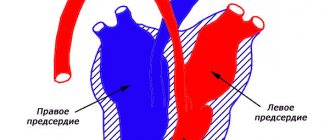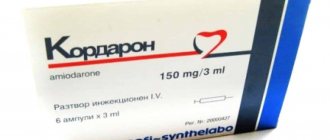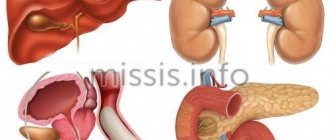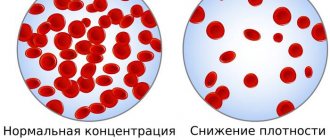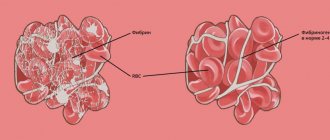Causes of the disease
The reason for this is clinical manifestations: it hurts in places that have nothing to do with the parathyroid glands.
The parathyroid glands are located near the thyroid gland and there are usually four of them. They are responsible for calcium metabolism. The glands produce parathyroid hormone (parathyroid hormone, PTH), whose task is to supply calcium to the blood.
The work of the parathyroid glands is limited by vitamin D. With age, it is absorbed less and less well, therefore, control deteriorates. Having received complete freedom of action, the parathyroid gland begins to increase the level of calcium in the blood.
Hyperparathyroidism
The disease hyperparathyroidism is problem No. 3 in endocrinology, after pathology of the thyroid gland and diabetes mellitus, the main “culprit” of hypercalcemia, which leads to damage to the bone, urinary, cardiovascular systems, gastrointestinal tract and other organs/tissues. In most cases, this disease has a mild a form of the course with mild symptoms, so it is not so easy to detect - a thorough diagnosis is necessary.
The basic role of parathyroid hormone secreted by the parathyroid glands is expressed in stabilizing the constant calcium content in the blood, which is translated into reality by the influence of parathyroid hormone on bone tissue, intestines and kidneys, on the work of which calcium metabolism in the body depends. It is known that bone tissue is the main depot of calcium, it contains 99% of this macroelement, and the functionality of the intestines and kidneys ensures the power of absorption and removal from the body.
The level of calcium in the blood regulates the production of parathyroid hormone via a negative connection involving calcium-sensitive receptors in the cells of the parathyroid gland.
Classification of hyperparathyroidism
Medicine has identified the following types of hyperparathyroidism:
- Primary hyperparathyroidism occurs against the background of increased production of parathyroid hormone, which causes an increase in the size of the parathyroid gland (in 15-20% of cases) or the growth of an adenoma in it (in 80-85% of cases). It is also expressed either by the formation of multiple adenoma (in 4-5% of cases), or by the formation of carcinoma and multiple endocrine neoplasia (in 1-3% of cases). This form also includes a pathology that largely depends on a genetic predisposition to diseases of the endocrine system. Primary hyperparathyroidism affects women twice as often (and in the postmenopausal period - five times more often) than men, aged from 20 to 70 years, the apogee of incidence is 40-60 years against the background of a large under-examination of the population.
- Secondary hyperparathyroidism usually develops due to calcium deficiency in the body, and can also arise from a lack of vitamin D. As a result, the parathyroid gland begins to intensively produce parathyroid hormone, trying to compensate for their lack. In addition, calcium deficiency in the body is caused by disturbances in the gastrointestinal tract, which is responsible for the absorption of calcium and vitamin D into the blood.
- Tertiary hyperparathyroidism is a deviation that develops due to the autonomous functioning of the parathyroid adenoma during a prolonged course of secondary hyperparathyroidism.
- Pseudohyperparathyroidism develops as a result of excessive production of parathyroid hormone by ectopic neoplasms.
According to clinical manifestations, hyperparathyroidism is divided into two forms:
- Mild, combining a considerable number of oligosymptomatic and asymptomatic types of disease, characterized by increased levels of parathyroid hormone and calcium, without having a clearly defined clinical picture. Only sometimes there is weakness, fatigue, weakened memory, periodic pain in the joints and bones, decreased bone density, which increases the risk of fractures with a minimum of careless actions, chondrocalcinosis (changes in the joints), etc.
- Manifest, divided into bone, visceral with obvious kidney damage in primary hyperparathyroidism (60%) and mixed (combined with thyroid cancer), with visceral disorders occurring in 65% of cases.
Complications of hyperparathyroidism
A life-threatening complication of hyperparathyroidism is a hypercalcemic crisis, which develops when an elevated level of total calcium in the blood serum reaches >3.6 mmol/l (>14 mg%) and a low phosphorus content.
The most common cause of crisis is primary hyperparathyroidism, the course of which is caused by high hypercalcemia. Another cause may be a malignant tumor secreting PTH-related protein and severe vitamin D intoxication.
The crisis is based on an increase in the secretion of PTH or PTH-related protein, as a result of which the destruction/softening of bone tissue and the removal of calcium from it sharply increases, the reverse absorption of calcium by the kidneys increases, and a rapid increase in the concentration of calcium in the blood serum is observed.
A hypercalcemic crisis is characterized by:
- sudden serious condition of the patient;
- lack of appetite, refusal to eat, nausea, continuous vomiting, defecation disorder, severe muscle weakness, pain in joints, muscles, bradycardia;
- increased urination, unquenchable thirst, later - a decrease in the amount of daily urine;
- body temperature up to 40 degrees;
- sharp cramps in the abdomen can lead to rupture of the mucous membrane and perforation of the ulcer;
- symptoms of renal failure up to uremic coma;
- lethargy, apathy, drowsiness, numbness, loss of voluntary activity along with preservation of reflexes, memory loss, mental disorders (hallucinations, delirium, convulsions);
- heart failure, collapse, pulmonary edema, coma and death if untreated.
A hypercalcemic crisis can be triggered by:
- unexpected abnormal fracture;
- infectious infections;
- poisoning;
- pregnancy;
- a diet rich in calcium;
- treatment with antacids and alkalizing drugs.
Prognosis of hyperparathyroidism
The epilogue of the disease is determined by its causes and the timeliness of the treatment undertaken; naturally, it will be favorable with timely diagnosis and therapy. The absence of obvious destruction of the musculoskeletal system suggests complete recovery from hyperparathyroidism.
Radical surgical therapy in certain cases improves the quality of life of patients and leads to regression of bone and visceral destruction.
Kidney damage makes stable remission impossible without surgical treatment.
The completion of a hypercalcemic crisis can be predicted based on urgent and effective measures for its treatment.
It must be taken into account that the development of severe damage to the kidneys and bone tissue significantly reduces hopes for a complete recovery.
Prevention of hyperparathyroidism
To prevent hyperparathyroidism from occurring, it is necessary to periodically examine the blood for calcium and parathyroid hormone levels, especially in the presence of disruptions in the endocrine system, and try to constantly maintain sufficient saturation of calcium and vitamin D for the body, under the supervision of an endocrinologist.
Nervous system
There is still debate about the effect of excess calcium levels in the blood on the function of the nervous system.
On the one hand, patients with hyperparathyroidism exhibit weakness, mood swings, and increased fatigue, which are significantly reduced after normalization of calcium and parathyroid hormone levels.
On the other hand, the symptoms are too nonspecific to be associated directly with parathyroid hormone.
The parathyroid glands themselves increase in size, and can often be noticed by an ultrasound doctor when examining the thyroid gland.
Hypoparathyroidism
Symptoms and consequences
The main clinical detail of the disease is that the patient suffers from seizures.
In his body, muscle and nervous excitability increases due to parathyroid hormone deficiency. Against this background, powerful muscle contractions are observed, during which the patient feels severe pain. This sign is called “tetanic” in medicine. Before convulsions, the patient may experience stiffness of muscle tissue, numbness, a sensation of “pins and needles” in the area of the upper lip, fingers and lower extremities, coldness and tingling. Then the convulsions themselves occur, and, as a rule, they are symmetrical, that is, on both sides. The arm muscles reflex first, then the leg muscles. In rare cases, the facial muscles of the internal organs and body spasm.
- Due to convulsions, the patient develops characteristic signs from the involved areas and organs, manifested by spasms of muscle tissue:
- Upper and lower limbs - the functions of the flexion zones are mainly impaired. During a spasm, the arms are bent at the elbow and wrist, they are pressed to the body.
- Facial signs - the jaw clenches, the corners of the mouth are lowered, the eyebrows are knitted and the eyelids are half-lowered.
- Heart – sharp pain in the area of the main organ, a feeling of pressure.
- The patient's torso - the body takes on a curved shape due to arching backwards.
- Intercostal muscles, neck, abdomen and diaphragm - breathing problems, spasms of the bronchial system, shortness of breath, a feeling of chest tightness.
- Stomach, intestines and esophagus - swallowing reflexes are disrupted, intestinal colic and constipation occur.
- Genitourinary system – anuria is observed, there is no urination.
- In mild forms of hypoparathyroidism, convulsions occur 1-2 times a week and are accompanied by painful sensations. The duration of spasms is several minutes.
- Severe form – the patient is tormented several times a day and can last up to several hours. They arise both spontaneously and can be caused by irritants from the outside - electric shock, stress, pain, injury, etc.
Spasm of the muscle structure is often accompanied by pallor of the skin, rapid heartbeat, sudden surges in pressure, disorders in the gastrointestinal tract - vomiting, diarrhea. In severe cases, the patient may lose consciousness.
Vegetative disorders – observed:
- excessive sweating;
- fainting;
- dizziness.
The patient is accompanied by:
- tinnitus, tinnitus, temporary hearing loss;
- impaired concentration of memory;
- vision problems, twilight vision.
Cardiac activity is impaired, sensitivity to sharp sounds, loud conversations, and music increases. In terms of taste, a person is too sensitive to sour, sweet and spicy foods. Thermoregulation gets lost - the patient is either too hot or has chills.
Consequences
If there is a calcium deficiency in the body for a long time, then problems arise with the human psyche and memory. Insomnia, irritability, neuroses, emotional breakdowns, depression, melancholy develop, and intellectual abilities decrease.
In the chronic course of the disease, trophic pathologies also form:
- dryness and flaking of the skin;
- changes in skin pigmentation;
- fragility and deformation of the nail plate;
- formation of vesicles;
- fungal diseases;
- eczema;
- hair loss, baldness, early gray hair.
In children with hypoparathyroidism, teeth do not form correctly, tooth enamel hypoplasia, caries development and growth retardation are observed.
The long course of the disease leads to the formation of cataracts, which causes clouding of the eye lens, decreased visual acuity and the development of blindness. The latent (hidden) course is revealed by spasms of the muscle structure, frequent viral, fungal and bacterial infections, vitamin deficiency and intoxication.
A sharp and powerful decrease in the level of calcium in the blood leads to tetany - hypocalcemic coma. Seizure attacks occur suddenly and spontaneously due to external stimuli - acoustic, mechanical or hyperventilation of the respiratory canals.
References
1. Kiseleva, N.G. Diagnosis of osteoporosis in childhood. // N.G. Kiseleva, T.E. Taranushenko, N.K. Golubenko. – Medical Council, 2021. – pp. 186-193. 2. Lysenko, I.M. Diseases of the parathyroid glands. Hyperparathyroidism and hypoparathyroidism. – Protection of motherhood and childhood, 2012. – pp. 60-67. 3. Leder, B. Parathyroid hormone and parathyroid hormone-related protein analogs in osteoporosis therapy. Current osteoporosis reports, 2021. – Vol.15(2). – P.110-119. Doi: 10.1007/s11914-017-0353-4. 4. Clinical recommendations “Primary hyperparathyroidism” / approved. Ministry of Health of the Russian Federation, 2021. – URL: https://www.endocrincentr.ru/sites/default/files/specialists/science/clinic-recomendations/kr88.pdf.

